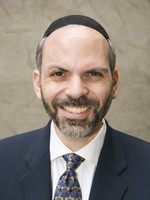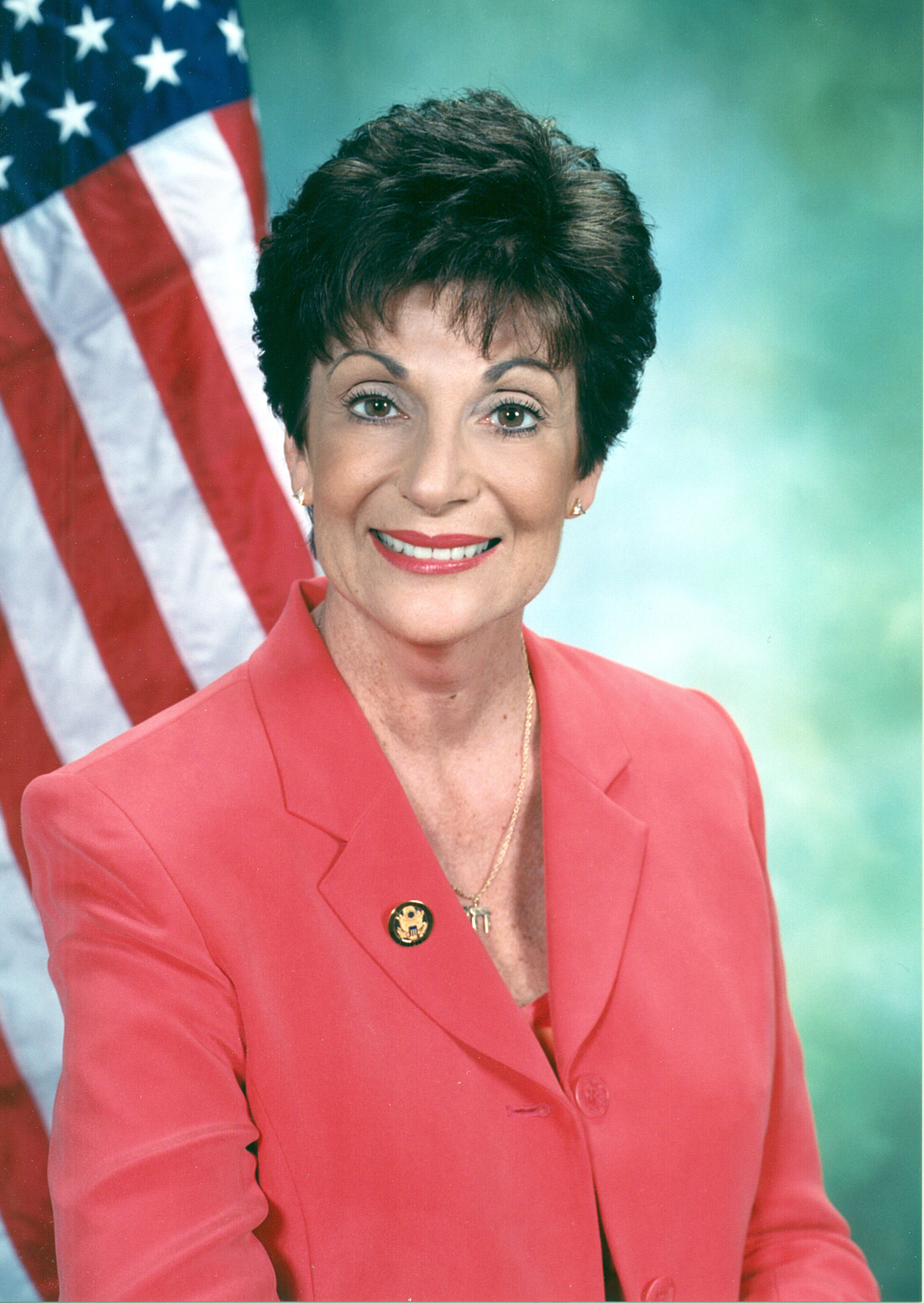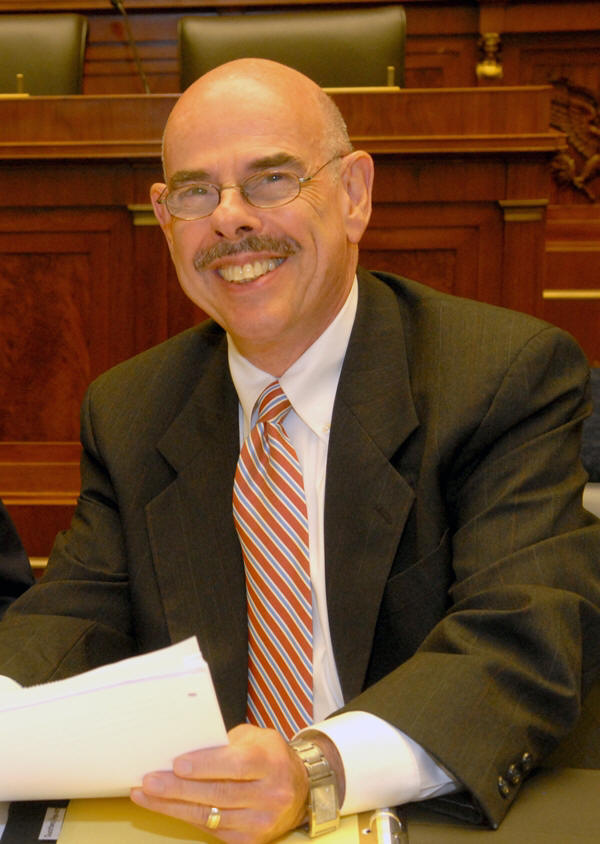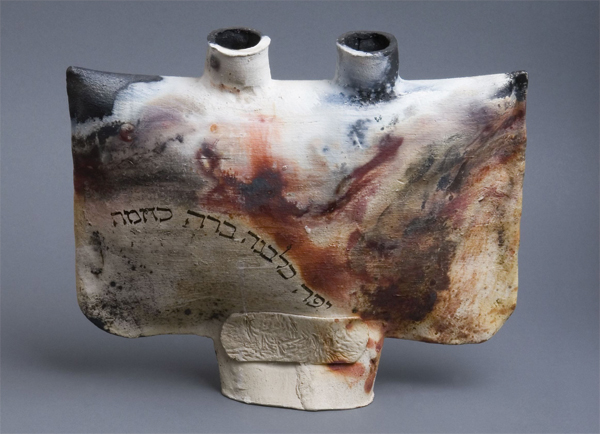|
Looking
for High Holiday services? See
Calendar listings
Sept. 12-14
San Diego Jewish World
Saturday Evening-Sunday,
August 25-26, 2007
Vol.
1, Number 117
| Names of government officials
from the Jewish community are printed in bold face type
|
|
San Diego Jewish World
August 25, 2007
(click on headline below to jump to the story)
Israel and Middle East
Terrorists die in cross-border
attack at Erez
Leukemia researchers target receptor that enables blood
cells to turn off self-destruct mechanism
Technique for building
machines with artificial intelligence may aid Alzheimer's
research
Weizmann Institute
researches find memories require ongoing flow of enzymes to be
sustained
Research group finds Keeloq not full-proof
Technion's
math camp attracts group of geniuses
Ben-Gurion University professor briefs Knesset committee
on solar energy's potential for Israel
Africa
Joint Distribution Committee establishes
youth
village in Rwanda modeled on Yemin Orde
United States of America
Noted Beth
Din leader
appointed
Yeshiva U
dean
Commentary
Phil Witte cartoon on Holocaust claims payments
Features
Jewish Grapevine
Arts & Entertainment
American Jewish University exhibits
human figure sculptures by Annette Bird and Dan Van Clapp
Ritual
objects of Susan Dehan Felix showcased at museum of Hebrew Union
College in New York
|
Terrorists die in
cross-border attack at Erez
ISRAEL-GAZA BORDER (Press
Release)—During the early
morning, approximately at 7 am,
two armed terrorists wearing
uniforms, concealed by heavy
fog, infiltrated into Israeli
territory. The terrorists opened
fire and hurled grenades at the
Coordination and Communication
Directorate in Gaza, situated
near the Erez crossing.
The soldier manning the crossing
was lightly wounded, and
returned fire in the direction
of the terrorists, who were
advancing towards Yad Mordechai
and Kibbutz Erez. A Golani
Brigade force was immediately
mobilized and, upon arrival,
killed the two terrorists. This
took place a mere hundred meters
away from the site of the
original incident. The forces
uncovered weapons on the bodies
of the terrorists, including;
explosives, grenades, and
Kalashnikov assault rifles.
During the firefight, an IDF
soldier was lightly wounded, and
later evacuated to a hospital
for medical treatment.
"The instant we realized that an
infiltration had taken place, we
mobilized the military, the
police, and security forces
which were located in
communities in the area," said
Colonel Moni Katz, the commander
of Northern Brigade in the Gaza
Division, after the incident.
|
|
"We successfully neutralized the
region. One of the forces
prevented the advancement of the
terrorists and engaged them. We
immediately surrounded them,
attacked them, and the event
concluded with the deaths of
both terrorists."
Colonel Katz also added; "from
our current knowledge, these
terrorists belong to the Popular
Resistance Committees and to the
Fatah organizations. They were
fully prepared with uniforms,
vests, weapons, grenades, and
explosives, which they intended
to use against the forces
pursuing them. I think that this
was a very successfully
operation, carried out
successfully by all forces in
the area within a short time
span. The operation succeeded in
isolating the terrorists and
ending the incident with the
best possible outcome."
The
preceding story was provided by
the Israel Defense Forces

Leukemia researchers target receptor that
enables blood cells to turn off self-destruct
mechanism
REHOVOT, Israel (Press Release)—Chronic Lymphocytic
Leukemia is a type of blood cancer in which specific
white blood cells, called B lymphocytes or B cells,
build up in the blood, bone marrow and lymph nodes. The
lifespan of a normal B cell is limited by an internal
self-destruct program but, in cancer cells, this
mechanism breaks down. B cells that don’t self-destruct
can live on to multiply and eventually accumulate in
dangerous amounts.
A team of scientists headed by Prof. Idit
Shachar of the Weizmann Institute’s Immunology
Department and Dr. Michal Haran of the Hematology
Institute of the Kaplan Medical Center recently
discovered what makes these cancer cells stay alive.
They then launched a targeted attack on the survival
mechanism they discovered and succeeded to significantly
raise cancer cell mortality rates. Their findings, which
appeared recently in Proceedings of the National
Academy of Sciences (PNAS), may lead to future
treatments for this disease, as well as for other
diseases in which B lymphocytes accumulate in the blood.
In previous research, Shachar had found
that a specific receptor – a protein on the outer
surface of healthy B cells – fulfills a crucial role in
helping these cells to survive. She wondered if the same
protein might also be a central player in the abnormally
high survival rates of cancerous B cells.
Members of Shachar’s research team,
including Inbal Binsky, Diana Starlets, Yael Gore and
Frida Lantner, together with Kaplan Medical Center
doctors Haran, Lev Shvidel, Prof. Alan Berrebi and Nurit
Harpaz, scientists from Yale University and David
Goldenberg of the Garden State Cancer Center in New
Jersey, examined B cells taken from chronic lymphocytic
leukemia patients.
They discovered that, even in the earliest stages of the
disease, these cells have an unusually high level of
both the survival receptor and another protein that
binds to the receptor. The scientists found that this
protein, in binding to the receptor, initiates a series
of events within the cell that leads to enhanced cell
survival capabilities. For instance, in one of these
events, a substance is produced that helps to regulate
the cells’ lifespan. This substance causes another
protein to be produced, which then prevents the
self-destruct program from being activated.
The team treated the chronic lymphocytic
leukemia cells with an antibody that attached to the
survival receptor, blocking its activity and causing the
cancer cell death rate to soar.
The antibodies they used are produced by
the firm Immunomedics, in New Jersey, and are currently
entering clinical trials for the treatment of several
different types of cancer. Following this research,
which has revealed the mechanism for the antibody’s
actions, the company is planning trials for chronic
lymphocytic leukemia, as well.
Shachar: 'The abnormally elevated levels
of this receptor seem to be important factors in the
development of this disease, right from the beginning,
and they are responsible for the longevity of these
cancerous B cells. Blocking the receptor or other stages
in the pathway they activate might be a winning tactic,
in the future, in the war against cancers involving B
cells.'
Prof. Idit Shachar's research is supported by the
Weizmann Institute of Science-Yale Exchange Program; the
Abisch Frenkel Foundation for the Promotion of Life
Sciences, Switzerland; and Mr. Joe Gurwin, New York,
NY. Prof. Shachar is the incumbent of the Dr. Morton
and Anne Kleiman Professorial Chair.
The preceding story was provided by the Weizmann
Institute
|
Technique for building
machines with artificial intelligence may aid
Alzheimer's research
By Ilana Teitelbaum
Israel 21C
TEL AVIV (Press Release)—Mary Shelley`s Frankenstein
might have been unprecedented in its time, but since
then popular culture has been clogged with a fascination
for the concept of artificial intelligence, from the
eerily humanoid robots of The Twilight Zone to
films like AI and Robocop. People can`t
seem to get enough of the idea that advanced technology
may one day create sentient life, but at the same time
seem to dread the consequences of an apparent
transgression against the laws of nature.
It may therefore come as a surprise to find that
advances in the field of nano biotechnology are now
taking place that have nothing to do with creating
monsters. Instead, for Professor Eshel Ben-Jacob and his
graduate student, Itay Baruchi of Tel Aviv University`s
Department of Exact Sciences, the goal is to find
treatments for neurological disorders such as epilepsy,
Alzheimer`s and Parkinson`s disease.
With the use of chemical stimulation, Ben-Jacob and
Baruchi discovered that they could trigger a man-made
network of neurons to imprint patterns - the same
process by which the brain creates memories. This
discovery marks an early but crucial step toward the
invention of a computer chip with the capability to
create and store information the same way our own brains
do. By linking the network of neurons to software which
reads the neural activity, the network and the computer
can work together to carry out tasks of which computers
are currently incapable.
Their findings were published in the May issue of
Physical Review E, and later made headlines inScientific
American.
"Computers don`t have cognitive function because they
lack plasticity - they are fixed," Ben-Jacob told
ISRAEL21c in an office lined with bookshelves where
science texts and science fiction novels stand side by
side.
"We`re therefore thinking of adding features to
computers to make them more flexible and adaptable, like
human brains."
(Jump to
continuation)

Weizmann Institute researches find
memories require ongoing flow of enzymes to be sustained
REHOVOT, Israel
(Press Release)—What happens in our brains when we learn
and remember? Are memories recorded in a stable physical
change, like writing an inscription permanently on a
clay tablet? Prof. Yadin Dudai, Head of the Weizmann
Institute’s Neurobiology Department, and his colleagues
are challenging that view. They recently discovered that
the process of storing long-term memories is much more
dynamic, involving a miniature molecular machine that
must run constantly to keep memories going. They also
found that jamming the machine briefly can erase
long-term memories. Their findings, which appeared
August 16 in the journal Science, may pave the
way to future treatments for memory problems.
Dudai and research
student Reut Shema, together with Todd Sacktor of the
SUNY Downstate Medical Center, trained rats to avoid
certain tastes. They then injected a drug to block a
specific protein into the taste cortex – an area of the
brain associated with taste memory. They hypothesized,
on the basis of earlier research by Sacktor, that this
protein, an enzyme called PKMzeta, acts as a miniature
memory 'machine' that keeps memory up and running.
An enzyme causes structural and functional changes in
other proteins: PKMzeta, located in the synapses – the
functional contact points between nerve cells – changes
some facets of the structure of synaptic contacts. It
must be persistently active, however, to maintain this
change, which is brought about by learning. Silencing
PKMzeta, reasoned the scientists, should reverse the
change in the synapse. And this is exactly what
happened: Regardless of the taste the rats were trained
to avoid, they forget their learned aversion after a
single application of the drug. The technique worked as
successfully a month after the memories were formed (in
terms of life span, more or less analogous to years in
humans) and all signs so far indicate that the affected
unpleasant memories of the taste had indeed disappeared.
This is the first time that memories in the brain were
shown to be capable of erasure so long after their
formation.
'This drug is a
molecular version of jamming the operation of the
machine,' says Dudai. 'When the machine stops, the
memories stop as well.' In other words, long-term memory
is not a one-time inscription on the nerve network, but
an ongoing process which the brain must continuously
fuel and maintain. These findings raise the possibility
of developing future, drug-based approaches for boosting
and stabilizing memory.
Prof. Yadin Dudai's research is supported by the Norman
and Helen Asher Center for Brain Imaging; the Nella and
Leon Benoziyo Center for Neurosciences; the Carl and
Micaela Einhorn-Dominic Brain Research Institute; the
Irwin Green Alzheimer's Research Fund; and the Sylvia
and Martin Snow Charitable Foundation. Prof. Dudai is
the incumbent of the Sara and Michael Sela Professorial
Chair of Neurobiology.
The Weizmann Institute of Science in Rehovot, Israel, is
one of the world's top-ranking multidisciplinary
research institutions. Noted for its wide-ranging
exploration of the natural and exact sciences, the
Institute is home to 2,600 scientists, students,
technicians and supporting staff. Institute research
efforts include the search for new ways of fighting
disease and hunger, examining leading questions in
mathematics and computer science, probing the physics of
matter and the universe, creating novel materials and
developing new strategies for protecting the
environment.
The preceding story was
provided by the Weizmann Institute

(Return to top)
Research group finds Keeloq not full-proof
HAIFA (Press Release)—KeeLoq
is a cipher used in several
car anti-theft mechanisms
distributed by Microchip
Technology Inc. It may
protect your car if you own
a Chrysler, Daewoo, Fiat,
General Motors, Honda,
Toyota, Volvo, Volkswagen,
or Jaguar.
The cipher is included in
the remote control device
that opens and locks your
car and that activates the
anti-theft mechanism. Each
device has a unique key that
takes 18 billion billion
values.
With 100 computers, it would
take several decades to find
such a key. Therefore
Keeloq was widely believed
to be secure. In our
research we have found a
method to identify the key
in less than a day. The
attack requires access for
about one hour to the remove
control device (for
example, while it is stored
in your pocket). Once we
have found the key, we can
disactivate the alarm and
drive away with your car.
The attack has been
extensively tested using
software simulations.
This research is the joint
work between 3 research
groups: the computer science
department of the Technion,
Israel, the research group
COSIC of the Katholieke
Universiteit Leuven
(Belgium) and the Hebrew
University, Israel.
The preceding story was
provided by the Technion
(Return to top)
Technion's
math camp attracts group of geniuses
HAIFA (Press
Release)—For 14
years the parents of
Gilad and Shai Bar
made effort after
effort to bring into
the world a sibling
for their son Gitai.
Finally, they were
helped to do this by
an American
surrogate mom named
Gina. The result was
amazing – wonderful
twin boys – Gilad
and Shai.
Today, 17 years
later, the two are
taking part in the
first mathematics
summer camp for
youth of its kind in
Israel, being held
by the Technion’s
Faculty of
Mathematics. The two
have been discovered
to have mathematical
talent and for two
weeks they are
dealing with solving
number theory
problems (Tomba
17/19) along with 24
other participants
(among them four
girls).
Surrogate mom Gina
is also proud of
Gilad and Shai. She
visited them in
Israel when they
were three years
old, and since then,
has kept in close
contact with them
and their family
through letters and
phone calls. The
pair attends the
Shittim School in
the Arava’s Sapir
Center. The two are
outstanding students
in every subject,
especially the
sciences. The two
are also very
involved in other
activities –
swimming, soccer,
basketball,
ping-pong and
computers. They are
also avid readers -
mainly fine
literature and
science books in
English.
“We are alike in
everything,” they
say. “Even our
grades are
identical.”
Are there any
differences?
“Gilad likes hummous
and tehina and I
don’t,” laughs Shai.
At the Technion’s
number theory summer
camp, the two have
aroused great
interest. But they
are not unusual
among the talented
youth taking part -
such as Or Fischer,
whose mother Anath
is a professor in
the Technion’s
Faculty of
Mechanical
Engineering. His
father, Dr. Meni, is
a scientist at HP.
His grandmother, Dr.
Rudika, was also a
scientist. Before he
even entered first
grade,
Or already
knew multiplication
and fractions
(“Grandma taught
me”). He studies in
the Open University
and despite the fact
that he is only 16,
already has
completed a third of
an academic degrees
in mathematics.
Eyal Baruch’s
father, Moshe
Baruch, is also a
professor at the
Technion in the
Faculty of
Mathematics and a
member of the camp’s
organizing committee
(which is headed by
Prof. Jack Sonn).
Eyal’s grandfather,
Menahem Baruch is a
professor emeritus
in the Technion’s
Faculty of Aerospace
Engineering.
The camp also has
kids from outside of
Israel, like
Jonathan Eltzur from
California and Adlai
Chandershiker from
New Hampshire.
Dr. Yossi Cohen, the
camp’s initiator and
coordinator, is very
happy with this
group of young
geniuses. “They do
exercises in small
groups, compete
among themselves and
also help one
another. They also
go to the swimming
pool, take trips, go
to movies and learn
to find their way
around in nature –
all of which are
included in camp
activities.
They are competing
for a $5,000 prize
from World ORT,
which will be
awarded at the end
of the camp to the
boy or girl who
solved the greatest
number of exercises
in the best way, but
also helped others
find solutions. We
are pleased to see
that aside from the
studies, a real
social experience
has been created and
we hope to see them
at the Technion in
future years,” said
Dr. Cohen.
The preceding
story was provided
by the Technion—Israel's
Institute of
Technology

Please click on the above ad to
visit the Humanistic Jewish
Congregation's website
Ben-Gurion University professor
briefs Knesset committee on solar
energy's potential for Israel
BEER SHEVA,
Israel (Press Release)—A delegation
of the Knesset’s Internal Affairs
and Environment Committee, headed by
M.K. Ophir Paz-Pines recently
visited the Jacob Blaustein
Institutes’ Ben-Gurion National
Solar Energy Center at Sede Boqer,
for a briefing by Professor David
Faiman on solar power technology.
Faiman emphasized
the urgent need for the country to
adopt solar technology in order to
help reduce the increasing amount of
pollution caused by the use of
fossil fuels. He sympathized with
the fact that because of its unique
responsibilities, the Israel
Electric Corporation needs to be
extremely conservative and cautious
in its experimentation with new
technologies. However, he pointed
out that the solar-thermal
technology that Solel Corp. of Bet
Shemesh was recently commissioned to
construct in California has, for
more than two decades, proven itself
as a reliable technology. It
therefore presents no risk, and the
time is now ripe for the
construction of a 100 MW plant at
the Ashalim site that was previously
earmarked for this purpose by a
Knesset sub-committee.
Faiman indicated
that the cost of such a plant would
be equivalent to the public paying
an additional 1¢/kWh for their
electricity (which presently costs
about 10 ¢/kWh). In addition to
saving fuel a Solel plant would
provide vital first-hand experience
at integrating solar technology into
the grid system and would act as a
benchmark for all future solar
technologies.
As for the
future, Faiman expressed his
optimism for the concentrator
photovoltaic technology he and his
group recently used to achieve a
spectacular 1,500 watts of electric
power from a semiconductor receptor
no larger than a conventional 1 watt
solar cell. Naturally, for such a
feat it was necessary to employ a
solar dish in order to concentrate
the sun’s light onto the “cell”.
However, such dishes, if strung out
for 120 km along both sides of the
Arava road, could provide 10% of
Israel’s present electricity needs.
The preceding story was provided by
Ben-Gurion University of the Negev
.
Joint Distribution Committee establishes
youth
village in Rwanda modeled on Yemin Orde
RWAMANAGANA, Rwanda (Press Release)— A
staggering 1.2 million children --
nearly 15% of the Rwandan
population—were orphaned as a result of
the Rwanda genocide and left with little
hope for the future. On August 17, the
American Jewish Joint Distribution
Committee (JDC) dedicated the future
site of the Agahozo Shalom Youth Village
(ASYV) in Rwanda to help provide not
only a home, but opportunity and hope
for these future leaders.
"Since
1914, the JDC has been working to help
repair corners of this world. Genocide
knows no religious or ethnic boundaries
and the ASYV project affords us the
opportunity to help orphans of genocide
see a brighter future," says Dr. William
Recant, Assistant Executive Vice
President at the JDC. ASYV is a special
project of the JDC’s non-sectarian
efforts, formalized in 1986 as the JDC’s
International Development Program (JDC-IDP).
Modeled
after the Youth Aliyah Village of Yemin
Orde, an initiative established in 1953
to accommodate Holocaust orphans and
immigrant children in Israel, ASYV
employs the Jewish philosophies of
Tikkun Halev and Tikkun Olam—healing the
heart and mending the world. The Village
will incorporate a protected residential
environment and a high school for 500
Rwandan orphans and provide a protective
environment including innovative
educational programs, sports, a health
clinic and psychological services. A
team of Ethiopian-Israelis, many of whom
are graduates of Yemin Orde, will serve
as mentors for the educators and role
models for ASYV students.
Initiated in April 2006, the ASYV (www.agahozo-shalom.org)
project has moved quickly to
construction thanks in part to the
generous financial support of its
primary corporate partner, Liquidnet
Holdings, Inc. The program was also
recognized the Clinton Global Initiative
in 2006. The Village’s is expected to
become operational in 2009.
"ASYV
will do more than give children a
future. It will also provide Rwanda with
a group of individuals committed to
making a difference in their
communities," says South African-born
Anne Heyman, who founded the initiative
in conjunction with the JDC and who
received the Jewish Funders Network
Sidney Shapiro Award for the program's
creative, strategic, collaborative,
innovative response to real and pressing
societal needs in March of this year.
A
special delegation representing
Liquidnet, JDC, Yemin Orde and members
of the ASYV advisory board attended the
groundbreaking ceremony at the future
site of the Village.
The preceding story was provided by the
American Jewish Joint Distribution
Committee (JDC)
Noted Beth
Din leader
appointed
Yeshiva U
dean
NEW YORK
(Press
Release)—
Rabbi Yona
Reiss, a
noted Torah
scholar,
attorney,
and jurist
who has
served since
1998 as
director of
the Beth Din
of America,
the largest
rabbinical
court in the
United
States, has
been
appointed
dean of
Yeshiva
University’s
affiliated
Rabbi Isaac
Elchanan
Theological
Seminary.
RIETS is one
of the
leading
centers for
Torah
learning and
training for
the
rabbinate in
the world.
 Rabbi
Reiss’
appointment
was
announced
today by
RIETS
President
Richard M.
Joel and the
chairman of
the RIETS
Board of
Trustees,
Rabbi Julius
Berman. The
appointment
is effective
July 1,
2008.The
President’s
selection of
Rabbi Reiss
was made in
close
consultation
with Rabbi
Zevulun
Charlop, the
Max and
Marion Grill
Dean of
RIETS, and
Rabbi Norman
Lamm,
Chancellor
of YU and
Rosh
Hayeshiva
(Head of the
Yeshiva) of
RIETS. He
received the
approbation
of the RIETS
Board at a
special
meeting held
August 22. Rabbi
Reiss’
appointment
was
announced
today by
RIETS
President
Richard M.
Joel and the
chairman of
the RIETS
Board of
Trustees,
Rabbi Julius
Berman. The
appointment
is effective
July 1,
2008.The
President’s
selection of
Rabbi Reiss
was made in
close
consultation
with Rabbi
Zevulun
Charlop, the
Max and
Marion Grill
Dean of
RIETS, and
Rabbi Norman
Lamm,
Chancellor
of YU and
Rosh
Hayeshiva
(Head of the
Yeshiva) of
RIETS. He
received the
approbation
of the RIETS
Board at a
special
meeting held
August 22.
Rabbi
Reiss
“The Yeshiva
is the soul
of Yeshiva
University.
In Rabbi
Yona Reiss,
we have a
leader who
will nurture
that soul,
and advance
Torah study
and protect
Torah
values,”
said
President
Joel, who is
also
President of
Yeshiva
University.
“His
integrity,
intellect,
warmth, and
humility
will inform
his work as
he partners
with an
outstanding
rabbinic
faculty, to
shape the
educational
direction
for the
school.
There are
enormous
opportunities
and needs
for our
community,
which our
students
must be
poised to
lead.”
President
Joel took
special note
of Rabbi
Reiss’
academic
pedigree. He
is a summa
cum laude
graduate of
Yeshiva
College,
YU’s
undergraduate
liberal arts
and sciences
college for
men, and
went on to
receive his
law degree
from Yale
Law School,
where he was
senior
editor of
the Law
Journal. He
received his
rabbinic
ordination
from RIETS,
where he
also earned
the
distinction
of Yadin
Yadin, an
advanced
juridical
ordination.
(Jump
to
continuation)
. {Click
the above ad for more
information
{Click
the above ad for more
information}

.
. . .
  CALENDAR—The San Diego region of the American Israel Public Affairs Committee has sent out a "save the date" card for its Sunday, March 30, brunch at the Sheraton San Diego Hotel and Marina, with registration beginning at 9 a.m. and the program, still to be announced, beginning at 10 a.m. Co-chairs of the brunch are Claire & David Ellman; table captain co-chairs are Hillary & Jeffrey Liber. The registration is $50 for those who sign up before March 3, and $65 for those who sign up thereafter. AIPAC's San Diego chair is Leslie Caspi. More information is available from the AIPAC office at (858) 626-2790. You may RSVP on line via this link. CALENDAR—The San Diego region of the American Israel Public Affairs Committee has sent out a "save the date" card for its Sunday, March 30, brunch at the Sheraton San Diego Hotel and Marina, with registration beginning at 9 a.m. and the program, still to be announced, beginning at 10 a.m. Co-chairs of the brunch are Claire & David Ellman; table captain co-chairs are Hillary & Jeffrey Liber. The registration is $50 for those who sign up before March 3, and $65 for those who sign up thereafter. AIPAC's San Diego chair is Leslie Caspi. More information is available from the AIPAC office at (858) 626-2790. You may RSVP on line via this link.
CONGREGATIONAL CURRENTS—Rabbi Adam Rosenthal, a May graduate of the Jewish Theological Seminary, is the new head rabbi at Peninsula Sinai in Foster City, California, in the San Francisco Bay Area. He is the son of Rabbi Leonard Rosenthal, spiritual leader of Tifereth Israel Synagogue in San Diego. In an interview with "J," Northern California's weekly Jewish newspaper, he paid tribute to his father. Stacey Palevsky of the J wrote that the younger Rosenthal is "trying to embrace his father’s best qualities — his ability to care about people, to have a calm presence, to think clearly and not reactively, to stay open-minded."
 The current issue of Reform Judaism The current issue of Reform Judaism
h ighlights the Union of Reform Judaism's 2007 biennial convention, which is expected to draw thousands of delegate and family members to San Diego from all parts of the country December 12-16. Among articles in the issue are two by San Diego Jewish World
e ditor Don Harrison on Jewish places to visit in San Diego and on general sightseeing in the southwest corner of the continental United States.
CYBER-REFERRALS—We thank contributors who pass along or post stories of interest for your benefit:
●American Jewish Congress has released a declassified Israeli report detailing how Hezbollah positioned its weapons in civilian areas in a conscious effort to utilize "human shields" and how it purposely targeted the civilian population in Israel—both acts being "war crimes," according to Efraim Halevy, a former head of Mossad now chairing Israel's Center for Special Studies. Here is a link to the study.
●Hillel Mazansky forwards to us a "good news" compilation by Anglo-Saxon Ra'anana, a real estate company in Israel that caters to English-speaking
olim.
Here is a link to its list of some of Israel's achievements.
JEWISH POLITICAL FIGURES—Elected officials from the Jewish community find themselves dealing with a great variety of issues. We'll post you on some of their wide ranging activities in this section of this column.
●COMMITTEE CHAIRS—Perusal of congressional websites indicates that a dozen committees are chaired by members of the Jewish Community, all Democrats except Joseph Lieberman (Independent, Connecticut). In the House these committees are Financial Services (Barney Frank
of Massachusetts); International
Relations (Tom Lantos
of California); Oversight and Governmental Affairs (Henry Waxman of California); Veteran Affairs (Bob Filner of California). In the Senate, the committees are Aging (Herb Kohl of Wisconsin); Armed Services (Carl Levin of Michigan); Environment and Public Works (Barbara Boxer of California);
Ethics (also
Barbara Boxer); Homeland Security and Government Affairs (Joseph Lieberman of Connecticut); and Rules and Administration (Dianne Feinstein of California). Joint Committees of the House and Senate: Economics (Charles Schumer of New York); Library (also Dianne Feinstein).
 ●U.S. Rep.
Shelley Berkley (Democrat, Nevada) held a news conference on Friday in Las Vegas to appeal for President George W. Bush to sign the SCHIP (State Children's Health Insurance Program). Joined by
Mary Johnson, Maternal Child RN, San Martín Campus and Andy North, Spokesman, St Rose Dominican Hospitals, Berkley said: "Given that Nevada has one of the highest percentages of uninsured residents in the nation, it is critical that we work together to help these families in Las Vegas and throughout the Silver State who are at risk because they continue to have no healthcare coverage." ●U.S. Rep.
Shelley Berkley (Democrat, Nevada) held a news conference on Friday in Las Vegas to appeal for President George W. Bush to sign the SCHIP (State Children's Health Insurance Program). Joined by
Mary Johnson, Maternal Child RN, San Martín Campus and Andy North, Spokesman, St Rose Dominican Hospitals, Berkley said: "Given that Nevada has one of the highest percentages of uninsured residents in the nation, it is critical that we work together to help these families in Las Vegas and throughout the Silver State who are at risk because they continue to have no healthcare coverage."
 ● U.S. Sen.
Bernie Sanders (Independent,
Vermont) continues to get mileage criticizing U.S. President George W. Bush for not visiting Vermont once since he became President in 2001—the lone state of the 50 in the United States Bush has stayed away from. Vermont is also the state of Democratic National Chairman Howard Dean, and Sanders suggests maybe Bush is afraid to come to a state that views the world from the liberal side of the spectrum. ● U.S. Sen.
Bernie Sanders (Independent,
Vermont) continues to get mileage criticizing U.S. President George W. Bush for not visiting Vermont once since he became President in 2001—the lone state of the 50 in the United States Bush has stayed away from. Vermont is also the state of Democratic National Chairman Howard Dean, and Sanders suggests maybe Bush is afraid to come to a state that views the world from the liberal side of the spectrum.
 ● U.S. Rep. Henry Waxman (Democrat, California), chairman of the House Oversight and Government Reform Committee, has requested the heads of federal agencies to respond what role they played in the White House's 'Asset Deployment' strategy for the 2004 reelection, wherein actions of federal government allegedly were coordinated for maximum benefit for President George W. Bush's reelection and the elections of friendly Republican members of Congress. Here is a link to a copy of the letter that Waxman sent to U.S. Attorney General Alberto Gonzales Jr. on the subject. ● U.S. Rep. Henry Waxman (Democrat, California), chairman of the House Oversight and Government Reform Committee, has requested the heads of federal agencies to respond what role they played in the White House's 'Asset Deployment' strategy for the 2004 reelection, wherein actions of federal government allegedly were coordinated for maximum benefit for President George W. Bush's reelection and the elections of friendly Republican members of Congress. Here is a link to a copy of the letter that Waxman sent to U.S. Attorney General Alberto Gonzales Jr. on the subject.
(Return to top)

Click the ad above to go to the "I'm there for you baby" website
|

{Marc Kligman, who combines being a sports agent with his life as an observant Jew, invites you to listen. Click on the ad above for more information}
American Jewish University
exhibits human figure sculptures
by Annette Bird and Dan Van
Clapp
LOS ANGELES (Press Release)—
American Jewish University (AJU)
presents small scale sculptures
by Annette Bird and Dan Van
Clapp, expanded in many
directions by elements that fire
up the imagination. Bird’s
compositions are modeled,
carved, cast and constructed
anew, while Van Clapp depends
upon found materials invested
with a former life to send the
viewer’s mind spinning. Both
artists use the human figure as
their central motif. Entrance
into the Platt Gallery is free
and the show will be on exhibit
from September 30 to November 11
with a public reception on
Sunday, September 30 from 3-5
p.m.
Annette Bird often places two or
more figures in silent
conversation. Her compositions
are concerned with real or
fantasized relationships, some
romantic and loving, some not,
some conflicted, between
spouses, parents and children,
friends, partners or
lovers. These assembled
sculptures are her response to
the world in which we live, the
cultural or political milieu in
which we exist. They portray the
dynamics she perceives in the
human drama of everyday life.
There is always a psychological
element present.
Dan Van Clapp assembles found
materials. Fragments such as
antique doll parts, hardware,
jeweled bits and worn fabrics
infer a human history, a rich
and troubled past. The mood of
mystery and religious import
reflect Van Clapp’s interest in
seventeenth century church
santos.
AJU is located at 15600
Mulholland Dr. in Bel Air in the
Sepulveda Pass, just east of the
Mulholland Drive exit of the 405
Freeway. Parking is free. Platt
Gallery hours are Sunday through
Thursday from 10 a.m. to 4 p.m.,
Friday 10 to 2 pm. For more
info on this event or to arrange
for a docent tour, call
310-440-1201. For more
information on AJU, log onto
www.ajula.edu.
The preceding story was provided
by American Jewish University

From the HUC-JIR
exhibition of Susan Dehan
Felix's ritual objects for women
Ritual
objects of Susan Dehan Felix
showcased at museum of Hebrew
Union College in New York
NEW YORK (Press Release)—“Flamed Earth: The Ritual Objects of Susan Dehan Felix” will be on display at the museum of the Hebrew Union College-Jewish Institute of Religion at 1 W. 4th Street in New York City through January 25.
Felix is a Jewish feminist ceramic artist who specializes in ritual objects. She lives in Berkeley, California and has been a ceramic artist for over 45 years.
Felix is paving the way for contemporary Jewish women's ritual objects to be incorporated and recognized in Jewish ceremonies that are traditionally male. Amongst the objects included there are Miriam's cups, wedding cups, wedding bowls, and blessing bowls.
The piece, "Miriam's Cup" exemplifies the successful merger of the inclusion of women in Jewish ritual and feminism. This is a bowl used for the washing of hands set atop a cup. Felix symbolizes the feminist prerogative with the Miriam cup designed to be used alongside Elijah's cup at Passover. The fluid design is emblematic of Miriam locating water in the desert, signifying women's power which existed but was not acknowledged in biblical times.
Felix uses the primitive technique of pit firing and smoke- firing to create works that capture the powerful contrast of the western landscape. This process requires Felix to relinquish control over the ultimate result, trusting that an original and organic design will beautifully emerge from the firing. The final results are pieces that symbolize a continuous effort to find light amidst darkness and chaos.
The museum’s hours are Monday-Thursday, 9 am - 6 pm; Friday, 9 am - 3 pm . Admission is free. Photo ID required for entrance.
The preceding story was provided by Hebrew Union College-Jewish Institute of Religion
(Return to top)

Artificial Intelligence...
(Continued from above)
It`s the connection between the
computer and the neural network,
which would communicate with one
another, that creates a new kind
of machine. Ben-Jacob
elaborates: "The network won`t
replace the computer but it will
do the softer cognitive
functions of decision-making,
interaction with the
environment, and sound
recognition."
According to Baruchi, biological
computing might also lead to
technology that Microsoft has
been working to achieve, without
success: handwriting
recognition, made possible by
virtue of the biological
system`s ability to detect
patterns.
"The ability of the regular
silicon-based computer to detect
patterns is very low, and it
needs a very sophisticated
algorithm. With the biological
system it`s very easy, because
humans and animals can easily
detect patterns," said Baruchi,
who has been working with
Ben-Jacob for seven years.
In order to conduct experiments,
neurons are placed in a Petri
dish that is studded with
electrodes on its base. The
neurons spontaneously form a
communicative network, and their
activity generates pulses of
voltage which are recorded by
the electrodes. The electrodes
are, in turn, connected to a
computer that monitors and
records the resulting patterns
on its screen.
Scientists have long known that
an artificial network of brain
cells will create spontaneous
patterns of activity, but they
had not found a way to add new
patterns. The common methods of
experimentation on artificial
networks of brain cells have
been electrical stimulation and
chemical stimulation. Baruchi
explains that in his work with
Ben-Jacob, chemical stimulation
made sense because "neurons
stimulate one another with
chemical cues - so we thought we
would [stimulate them] in the
same way."
Neurons are divided into two
types: Excitatory neurons, which
promote neurological activity,
and inhibitory neurons, which
reduce activity. According to
Ben-Jacob, most researchers have
tended either to focus on
stimulating one or the other by
"reward" (in the case of
excitatory neurons) and
"punishment" (in the case of
inhibitory neurons). Baruchi and
Ben-Jacob came up with the idea
to suppress the inhibitory
neurons with an injection of the
chemical picrotoxin, which freed
the excitatory neurons to create
new patterns without hindrance.
These new patterns lasted for
days and in harmony with the
already existing patterns.
"We did something new, we
invented teaching by
liberation," says Ben-Jacob. "We
gave the network the ability to
act freely and generate new
things by reducing inhibition
during the limited time of
stimulation. This helps to
create a new pattern of firing."
In the foreseeable future, the
ability to imprint patterns in
an artificial network of brain
cells can be developed into
various technologies. Ben-Jacob
predicts that brain repair will
be an important consequence for
the treatment of neurological
disorders like Alzheimer`s and
Parkinsons. "Now that we have
learned additional secrets [of
how the brain stores
information] we may be able to
take a network, add stem cells
and with the right stimulation
can convert them into a
functioning network," says
Ben-Jacob.
An even more long-term vision is
to use these ideas for the
treatment of epilepsy. Ben-Jacob
describes the process by which
this might be carried out: a
recording of the brain activity
of the epilepsy patient would be
fed to the networks through a
computer. The network would then
communicate with the human brain
in order to correct the
epilepsy.
The science fiction aspect of
the discovery rears its head
when Ben-Jacob describes other
potential advances, such as "cybrids"
(cyborg-hybrids) that can learn
to carry out specific tasks. His
idea is that the networks, which
are biological and therefore
react as humans do, will be
connected with co-evolvable
computer software, so that the
network and the software can
evolve together to learn tasks.
Exposing the network to various
toxins would produce specific
patterns from the neurons, which
the computer would then record
and learn; a technology which
would lead to the creation of
machines that are capable of
identifying toxins in the
environment.
Ben-Jacob sees many potential
possibilities, and suggests: "We
can connect the
network with retina cells so it
can detect light, for building a
robot that can look and see... a
machine that shares similar
capabilities with the human
brain."
The
preceding Israel 21c story was
provided by Tel Aviv University
(Return to top)
Yeshiva University dean...
(Continued from above)
“I have been shaped in large
part by both the educational
experience and intellectual
philosophy of Yeshiva
University,” said Rabbi Reiss,
“and I am excited to have the
opportunity to play a meaningful
role in the Torah education of
the wonderful students who
represent the future of our
community.”
For more than 35 years, Rabbi
Charlop has been dean of the
seminary. Under his leadership,
RIETS experienced enormous
growth, graduating thousands of
rabbis, educators, and Jewish
scholars. He announced recently
that he is relinquishing that
position effective June 30,
2008. He will continue to serve
as one of the Masmichim, those
who administer ordination exams,
and will maintain his special
relationship with the Kollelei
Elyon (advanced study groups).
Rabbi Charlop will remain full
time as dean emeritus of RIETS,
and will serve as special
advisor to the YU President on
yeshiva affairs with cabinet
rank.
“Rabbi Reiss is a stellar choice
for the deanship of RIETS,” said
Rabbi Charlop, who noted that he
is gratified to have been a
mentor to Rabbi Reiss during his
student days at the seminary.
“His most important character
trait is his integrity, which is
known and respected throughout
the Orthodox community.
Moreover, while he lives in two
worlds, the secular and the
sacred, he is anchored in the
yeshiva.”
Rabbi Reiss said he takes “pride
in our wonderful yeshiva that
has been guided with such love
and devotion for so many decades
by Rabbi Charlop. I hope in my
tenure to ensure that we
continue to maintain our
standard of excellence in a
fashion that both maximizes the
potential of each of our
students and serves the
multifarious needs of our
community, both locally and
globally.”
Rabbi Reiss’ appointment was
also strongly endorsed by Rabbi
Lamm: “This is a marvelous
appointment at this point in
RIETS’ history. He has a great
range of erudition, a broad
spectrum of interests, is
totally committed to the vision
of RIETS, and is a firm believer
in Torah Umadda.”
Rabbi Reiss has been director of
the Beth Din of America since
1998. The Beth Din, which was
founded by and is affiliated
with the Rabbinical Council of
America (RCA) and sponsored by
the Union of Orthodox Jewish
Congregations of America (OU),
is the largest rabbinical court
in the country. It handles over
500 cases a year in the areas of
Jewish divorce, commercial
arbitrations, and mediation.
In his directorship of the Beth
Din, Rabbi Reiss has worked to
resolve cases of agunot, chained
women who cannot obtain a Jewish
divorce, and popularize the use
of the RCA pre-nuptial agreement
as a protection against future
agunah problems.
From 1992 to 1998, Rabbi Reiss
worked as an associate at the
international law firm of Cleary
Gottlieb Steen & Hamilton in New
York City. He maintained an
association with the firm until
1999. He is a member of the New
York Bar Association, a
certified mediator for the City
of New York court system and a
member of the Family and Divorce
Mediation Council for New York.
Rabbi Reiss serves on the
editorial board of Tradition
magazine. A frequent writer on a
variety of topics relating to
both Jewish and secular law, he
has published widely in Jewish
publications, as well as the New
York Law Journal.
Rabbi Reiss and his wife Mindy
have five sons and live in
Riverdale, NY.
(Return to top)
|






 Rabbi
Reiss’
appointment
was
announced
today by
RIETS
President
Richard M.
Joel and the
chairman of
the RIETS
Board of
Trustees,
Rabbi Julius
Berman. The
appointment
is effective
July 1,
2008.The
President’s
selection of
Rabbi Reiss
was made in
close
consultation
with Rabbi
Zevulun
Charlop, the
Max and
Marion Grill
Dean of
RIETS, and
Rabbi Norman
Lamm,
Chancellor
of YU and
Rosh
Hayeshiva
(Head of the
Yeshiva) of
RIETS. He
received the
approbation
of the RIETS
Board at a
special
meeting held
August 22.
Rabbi
Reiss’
appointment
was
announced
today by
RIETS
President
Richard M.
Joel and the
chairman of
the RIETS
Board of
Trustees,
Rabbi Julius
Berman. The
appointment
is effective
July 1,
2008.The
President’s
selection of
Rabbi Reiss
was made in
close
consultation
with Rabbi
Zevulun
Charlop, the
Max and
Marion Grill
Dean of
RIETS, and
Rabbi Norman
Lamm,
Chancellor
of YU and
Rosh
Hayeshiva
(Head of the
Yeshiva) of
RIETS. He
received the
approbation
of the RIETS
Board at a
special
meeting held
August 22.






 The current issue of Reform Judaism
highlights the Union of Reform Judaism's 2007 biennial convention, which is expected to draw thousands of delegate and family members to San Diego from all parts of the country December 12-16. Among articles in the issue are two by San Diego Jewish World
editor Don Harrison on Jewish places to visit in San Diego and on general sightseeing in the southwest corner of the continental United States.
The current issue of Reform Judaism
highlights the Union of Reform Judaism's 2007 biennial convention, which is expected to draw thousands of delegate and family members to San Diego from all parts of the country December 12-16. Among articles in the issue are two by San Diego Jewish World
editor Don Harrison on Jewish places to visit in San Diego and on general sightseeing in the southwest corner of the continental United States.  ●U.S. Rep.
Shelley Berkley (Democrat, Nevada) held a news conference on Friday in Las Vegas to appeal for President George W. Bush to sign the SCHIP (State Children's Health Insurance Program). Joined by
Mary Johnson, Maternal Child RN, San Martín Campus and Andy North, Spokesman, St Rose Dominican Hospitals, Berkley said: "Given that Nevada has one of the highest percentages of uninsured residents in the nation, it is critical that we work together to help these families in Las Vegas and throughout the Silver State who are at risk because they continue to have no healthcare coverage."
●U.S. Rep.
Shelley Berkley (Democrat, Nevada) held a news conference on Friday in Las Vegas to appeal for President George W. Bush to sign the SCHIP (State Children's Health Insurance Program). Joined by
Mary Johnson, Maternal Child RN, San Martín Campus and Andy North, Spokesman, St Rose Dominican Hospitals, Berkley said: "Given that Nevada has one of the highest percentages of uninsured residents in the nation, it is critical that we work together to help these families in Las Vegas and throughout the Silver State who are at risk because they continue to have no healthcare coverage." ●
●  ● U.S. Rep. Henry Waxman (Democrat, California), chairman of the House Oversight and Government Reform Committee, has requested the heads of federal agencies to respond what role they played in the White House's 'Asset Deployment' strategy for the 2004 reelection, wherein actions of federal government allegedly were coordinated for maximum benefit for President George W. Bush's reelection and the elections of friendly Republican members of Congress. Here is
● U.S. Rep. Henry Waxman (Democrat, California), chairman of the House Oversight and Government Reform Committee, has requested the heads of federal agencies to respond what role they played in the White House's 'Asset Deployment' strategy for the 2004 reelection, wherein actions of federal government allegedly were coordinated for maximum benefit for President George W. Bush's reelection and the elections of friendly Republican members of Congress. Here is 


